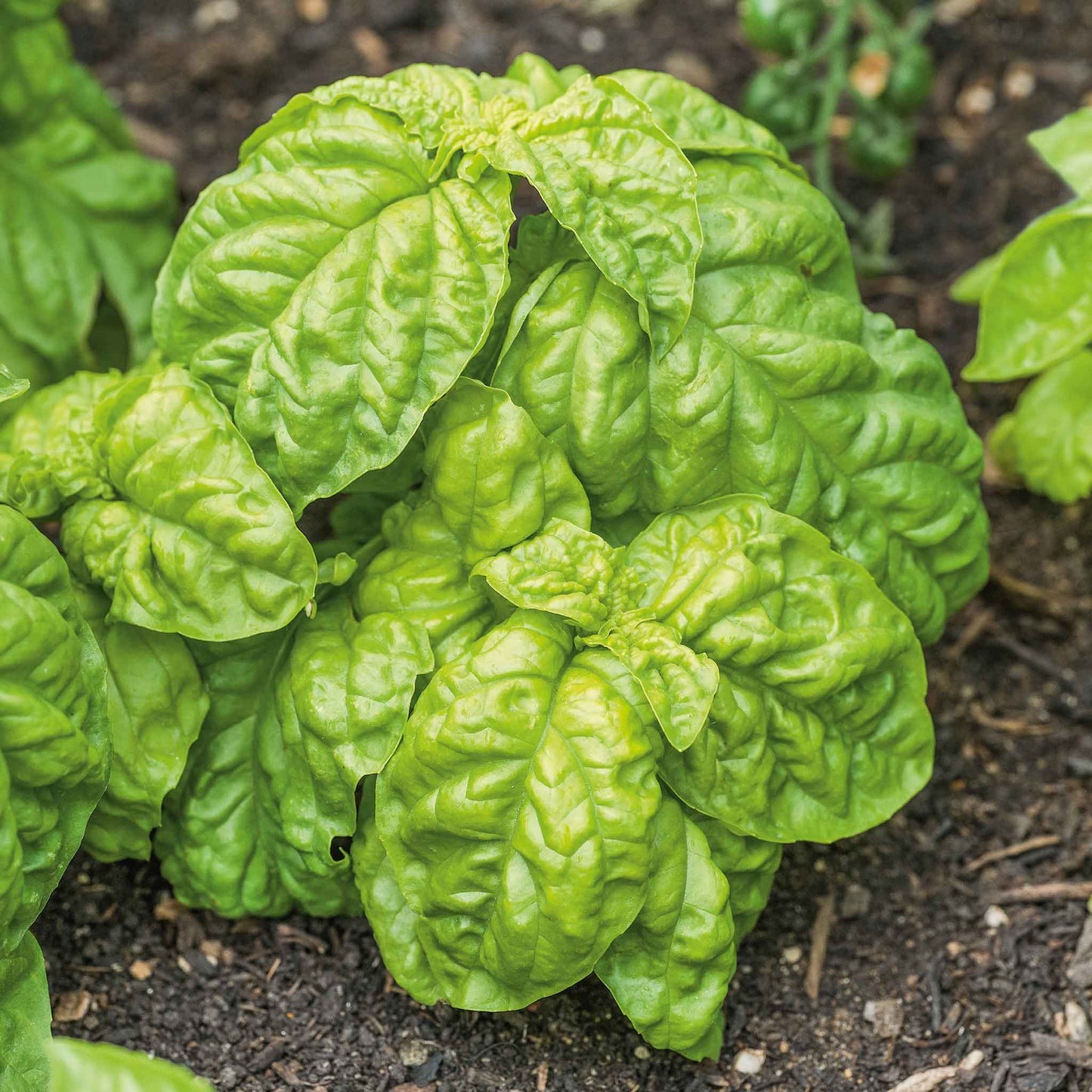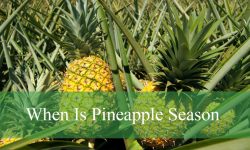If you love cooking with fresh herbs or enjoy gardening, chances are you’ve encountered basil. This aromatic herb is not only a staple in kitchens around the world but also comes in a stunning variety of forms, flavors, and colors. From sweet and mild to spicy and citrusy, the many types of basil plants offer something for every taste and garden style.
Exploring the different types of basil plants opens the door to an exciting world of culinary and ornamental possibilities. Whether you’re crafting a classic pesto, flavoring a Thai curry, or adding a burst of color to your garden beds, basil’s versatility shines through in its many cultivars. Each variety has its own unique characteristics, including leaf shape, fragrance, growth habit, and preferred climate.
In this article, we’ll introduce you to 26 of the most popular and unique types of basil plants, complete with pictures and names to help you identify and choose the best ones for your needs. Whether you’re a home chef, herbal tea lover, or garden enthusiast, this guide will help you discover the perfect basil for your space and lifestyle.
Different Types of Basil Plants
Sweet Basil (Ocimum basilicum)

Sweet Basil is the most common and widely grown basil variety, especially known for its use in Italian cuisine. It features large, smooth, oval-shaped green leaves with a slightly glossy texture. The aroma is sweet and slightly peppery with hints of clove, making it a go-to herb for tomato-based sauces, pesto, and salads.
This basil grows as an annual herb, reaching about 18 to 24 inches tall. It produces small white flowers if left to bloom, though most gardeners pinch them off to prolong leaf production. Sweet Basil is easy to identify due to its lush, bushy growth and distinctly aromatic foliage.
To grow Sweet Basil successfully, plant it in full sun and well-drained soil, preferably rich in organic matter. It thrives in USDA hardiness zones 10 to 11 as a perennial but is commonly grown as an annual in cooler climates. Regular watering, pruning, and harvesting will keep the plant healthy and encourage new growth.
Genovese Basil

Genovese Basil is a beloved cultivar of Sweet Basil, particularly famous for its use in authentic Italian pesto. It has flatter, broader leaves compared to standard sweet basil and gives off a stronger, more intense aroma with sweet and slightly spicy undertones.
This variety grows to about 24 to 30 inches tall and has a compact but full appearance. The leaves are deep green and somewhat wrinkled, offering a more robust flavor ideal for crushing into sauces or layering fresh on dishes. The plant may flower with white blooms, but trimming the tops prevents bolting and maintains leaf quality.
Genovese Basil thrives in warm, sunny locations and requires fertile, well-drained soil. Ideal for USDA zones 9 to 11, it can be grown indoors or outdoors and is well-suited for container gardening. Water it regularly and harvest frequently to keep it bushy and productive.
Italian Large Leaf Basil

Italian Large Leaf Basil lives up to its name with oversized, sweet-flavored leaves that are excellent raw or cooked. Its flavor is gentler than Genovese Basil, making it a favorite for layering in sandwiches, salads, and caprese dishes where a less intense basil note is preferred.
This basil variety is distinguished by its extra-large leaves that can reach up to 4 inches long. The leaves are tender with slightly serrated edges and a lighter green color compared to other basils. The plant grows vigorously and can become quite tall and wide with proper care.
Plant Italian Large Leaf Basil in full sun with nutrient-rich, well-draining soil. It prefers USDA zones 9 to 11 and benefits from consistent moisture and warm temperatures. Pinch off flower buds to prevent bolting and promote continuous leaf production throughout the growing season.
Lettuce Leaf Basil

Lettuce Leaf Basil is an eye-catching and practical variety known for its large, crinkled leaves that resemble loose-leaf lettuce. Its flavor is milder and slightly sweet, making it a great choice for wrapping food or adding a fresh crunch to salads and sandwiches.
This basil has an open, bushy growth habit and can grow up to 24 inches tall. The leaves are deeply lobed, ruffled, and can grow up to 6 inches long. While not as intensely flavored as other basils, its size and texture make it a unique culinary herb.
To grow Lettuce Leaf Basil successfully, place it in a sunny spot with well-drained, fertile soil. It prefers warm temperatures and grows well in USDA zones 9 to 11. Regular harvesting of the outer leaves encourages the plant to produce more and stay full throughout the season.
Greek Basil (Ocimum basilicum var. minimum)

Greek Basil is a compact, highly aromatic basil variety native to the Mediterranean region. It features tiny, pointed leaves and grows in a tidy, dome-like shape, making it ideal for container gardening and ornamental use as well as culinary purposes.
Despite its small leaves, Greek Basil packs a strong flavor punch with spicy and slightly peppery notes. The plant usually stays under 12 inches tall and produces small white flowers if left to bloom. Its miniature size and dense form also make it attractive for edging or decorative herb gardens.
Greek Basil grows best in full sun with regular watering and well-draining soil. It prefers USDA hardiness zones 9 to 11 and tolerates pruning very well. Keeping the plant trimmed not only enhances its shape but also stimulates continuous leaf production.
Spicy Globe Basil

Spicy Globe Basil is a compact, tidy-looking variety with a rounded, bush-like shape that makes it ideal for borders, containers, and decorative herb gardens. Its tiny leaves are densely packed and offer a sharp, spicy-sweet flavor that’s excellent for garnishing or flavoring dishes where a punch of basil is desired.
This basil grows in a neat globe form, usually reaching only 8 to 12 inches in height. The leaves are small, narrow, and vibrant green, making it easy to distinguish from broader-leafed types. Its pungent aroma and bold taste make it a favorite for fresh use in salads, soups, and sauces.
Spicy Globe Basil thrives in full sunlight and prefers well-drained, nutrient-rich soil. It performs best in USDA hardiness zones 9 to 11 and requires regular pruning to maintain its shape and vigor. Its compact size also makes it perfect for growing on windowsills or in small spaces.
Thai Basil (Ocimum basilicum var. thyrsiflora)

Thai Basil is known for its bold, anise-like flavor with subtle hints of licorice and spice, making it a staple in many Southeast Asian dishes such as curries, pho, and stir-fries. Its rich, savory taste stands up well to heat, unlike many sweet basil varieties.
Visually, Thai Basil stands out with its purple stems, narrow pointed green leaves, and deep purple flower spikes. The plant typically grows up to 18 inches tall and has a more upright growth habit compared to other basil types. Its vibrant coloring and distinctive flavor make it a prized herb both in the kitchen and garden.
Thai Basil prefers full sun and warm conditions with rich, well-draining soil. Best suited for USDA zones 9 to 11, it benefits from consistent moisture and should be pinched back regularly to promote bushier growth and delay flowering. It’s also a beautiful ornamental herb for edible landscapes.
Cinnamon Basil

Cinnamon Basil is an aromatic variety known for its sweet flavor infused with warm cinnamon notes. This unique twist on traditional basil makes it especially delightful in teas, desserts, fruit dishes, and even savory meals that call for a subtle spice.
This variety is easily identified by its reddish-purple stems and narrow, slightly serrated green leaves. It often produces small pink to lavender flowers, and the foliage gives off a warm, clove-cinnamon aroma when crushed. The plant can grow up to 24 inches tall and has an upright, graceful appearance.
Cinnamon Basil grows best in full sun with fertile, well-draining soil. Ideal for USDA zones 9 to 11, it benefits from regular watering and pruning. Harvest leaves frequently to encourage continuous growth and to enjoy the freshest, most flavorful foliage.
Lemon Basil

Lemon Basil offers a fresh, citrusy twist with its zesty lemon-scented leaves. Popular in Thai, Indonesian, and Middle Eastern cuisine, it’s perfect for fish dishes, marinades, teas, and salads. The aroma is invigorating, and the taste is both tangy and slightly sweet.
The plant features narrow, light green leaves and white flowers that bloom in summer. It tends to grow between 12 to 18 inches tall and has a bushy, branching habit. Its fragrance and slender leaf shape help distinguish it from other basil varieties.
Lemon Basil flourishes in sunny conditions with fertile, well-drained soil. Suitable for USDA hardiness zones 9 to 11, it requires consistent watering and occasional trimming to keep it from flowering too soon. Pinching back flower heads will extend the harvest and improve leaf flavor.
Lime Basil

Lime Basil is a vibrant and refreshing variety with a tart, citrusy scent and a bold lime-like flavor. It’s ideal for brightening up salads, cocktails, salsas, seafood, and fruit-based dishes. The flavor is more tangy and intense than Lemon Basil, with a crisp herbal kick.
This basil grows up to 20 inches tall and has small to medium green leaves with a clean, bright fragrance. The plant’s compact growth and delicate appearance make it as ornamental as it is flavorful, adding both color and aroma to herb gardens or patios.
Lime Basil prefers a warm, sunny environment and thrives in USDA zones 9 to 11. Like other basils, it needs well-drained soil and regular watering. Harvest leaves often and remove flower buds early to keep the plant lush and flavorful throughout the season.
Holy Basil / Tulsi (Ocimum tenuiflorum)

Holy Basil, also known as Tulsi, is a revered herb in Indian culture, valued for its spiritual significance and extensive medicinal uses. Its flavor is bold, slightly spicy, and clove-like, with a warming effect that makes it popular in teas, tonics, and Ayurvedic remedies.
The plant has small to medium green leaves that may have a slightly hairy texture and can range in color from light green to purplish, depending on the variety. It produces delicate purple or pink flowers and emits a strong, spicy aroma. Tulsi grows as a small shrub, typically 12 to 24 inches tall.
Holy Basil thrives in full sun and well-drained soil rich in organic matter. It prefers USDA hardiness zones 10 to 11 but can be grown as an annual in cooler regions. This plant benefits from consistent watering and regular pinching to encourage bushy growth and prevent early flowering.
Purple Basil (Dark Opal)

Purple Basil, particularly the Dark Opal variety, is known for its stunning deep purple leaves that make it both an ornamental and culinary delight. The flavor is mildly spicy with a hint of clove and a slightly peppery undertone, making it a great addition to salads, vinegars, and decorative garnishes.
The plant is easy to recognize with its dark, almost black foliage and occasional green mottling. It can grow up to 18 inches tall and produces pink to lavender flowers that contrast beautifully against the dark leaves. Its bold color also attracts pollinators and adds visual appeal to gardens.
Purple Basil grows best in full sun, which helps deepen its color, and in rich, well-drained soil. It is best suited for USDA zones 9 to 11 and should be watered regularly. Prune often to prevent bolting and to maintain a compact, bushy shape.
Red Rubin Basil

Red Rubin Basil is a striking cultivar closely related to Dark Opal but with even more intense reddish-purple leaves and a stronger flavor profile. Its taste is bolder and spicier, which makes it a great choice for culinary dishes that need both color and zest.
The plant features broad, smooth leaves that are uniformly deep red to purple and slightly glossy. It grows up to 24 inches tall and produces pale pink flowers. This variety is often used in herbal vinegars, infusions, and as an eye-catching garnish in fresh dishes.
Red Rubin Basil prefers full sun to maintain its vivid coloration and grows well in USDA zones 9 to 11. It needs fertile, well-drained soil and benefits from regular pruning. This variety is also a great choice for ornamental herb gardens due to its vibrant appearance.
African Blue Basil

African Blue Basil is a unique sterile hybrid that cannot produce seeds but is easily propagated by cuttings. It offers a rich, complex aroma with floral, spicy, and slightly camphor-like notes. Its flavor is intense, making it great for infused oils, teas, and savory dishes.
This basil stands out with its green leaves tinged with purple and striking purple veins and stems. It can grow quite large—up to 4 feet tall—and produces abundant purple flower spikes that are highly attractive to bees and other pollinators, making it ideal for pollinator gardens.
African Blue Basil thrives in full sun and warm conditions, favoring USDA zones 9 to 11. It prefers well-drained soil and benefits from regular pruning to control its size. Since it doesn’t go to seed, it continues to produce leaves and flowers throughout the growing season.
Ararat Basil

Ararat Basil is a visually stunning variety with vibrant green leaves adorned with deep purple veining and stems. The flavor is bold and slightly spicy, combining elements of anise and clove, which makes it excellent for salads, pesto, and other fresh culinary uses.
This variety grows into a medium-sized plant, typically reaching 18 to 24 inches tall. The bicolor foliage gives it a unique ornamental appeal, and it produces beautiful pale lavender flowers that enhance its visual interest in the garden.
Ararat Basil prefers full sun and well-draining, fertile soil. Best suited for USDA hardiness zones 9 to 11, it needs consistent watering and frequent pinching to keep it producing leaves. Its decorative look and robust flavor make it a favorite among gardeners who want beauty and utility in one plant.
Pistou Basil

Pistou Basil is a traditional French variety known for its compact size and strong, concentrated flavor. It’s commonly used in the classic Provençal dish soupe au pistou, and its small, tender leaves are ideal for creating smooth pestos and herb pastes.
This dwarf basil typically grows in a tight, bushy form no taller than 10 to 12 inches. Its leaves are small, smooth, and vibrant green, giving off a powerful aroma that’s more intense than its size suggests. It’s an excellent choice for small containers, windowsills, or herb borders.
Pistou Basil thrives in full sun and prefers light, well-draining soil. It’s well-suited for USDA zones 9 to 11, though it can be grown as an annual in cooler regions. Because of its dense growth habit, frequent pruning helps maintain airflow and leaf production.
Napolitano Basil

Napolitano Basil is an Italian heirloom variety recognized for its extra-large, heavily crinkled leaves and sweet, mild flavor. This type is excellent for pairing with pasta dishes, caprese salads, and sandwich wraps due to its soft texture and subtle taste.
The plant features oversized green leaves with a wrinkled appearance that helps trap dressings and oils, enhancing its culinary utility. It grows between 18 to 24 inches tall and has a more spreading, open form than other basils. The leaves can be as wide as your palm, making them perfect for layering.
Napolitano Basil prefers full sun and fertile, well-drained soil. Ideal for USDA hardiness zones 9 to 11, it needs regular watering and occasional feeding for best leaf production. Pinching the tips encourages branching and keeps the plant bushy and productive.
Mrs. Burns’ Lemon Basil

Mrs. Burns’ Lemon Basil is a beloved heirloom variety known for its bright, citrusy scent and intense lemon flavor. This variety is perfect for teas, marinades, salads, and desserts where a fresh, zesty twist is desired.
This plant typically grows 18 to 24 inches tall and features narrow, light green leaves that release a strong citrus fragrance when brushed or crushed. It produces white flowers and has a bushy habit, making it both functional and ornamental in the herb garden.
Mrs. Burns’ Lemon Basil thrives in full sunlight and well-draining soil. It grows best in USDA zones 9 to 11 and requires consistent moisture to prevent wilting. Regular harvesting will encourage more leaf production and delay flowering, preserving its rich citrus flavor.
Queen of Sheba Basil

Queen of Sheba Basil is a rare and decorative basil variety prized for its ornamental qualities as well as its fragrant, spicy leaves. Its complex aroma and attractive foliage make it a favorite for gardeners who enjoy growing unique, visually striking herbs.
This basil is easily recognized by its purple-tinged stems and distinctive leaf shape, which features slightly ruffled, glossy green leaves with a unique growth pattern. It grows to about 18 inches tall and produces violet flower spikes that attract pollinators.
Queen of Sheba Basil does best in full sun with fertile, well-drained soil and is suitable for USDA zones 9 to 11. It requires regular watering and occasional pruning to maintain its shape and encourage continuous leaf growth. It’s as beautiful in garden beds as it is useful in the kitchen.
Ruffles Basil (Green and Purple)

Ruffles Basil includes both green and purple cultivars, known for their deeply frilled, textured leaves that provide a decorative touch to salads and garnishes. The flavor is bold, with a peppery kick and hints of clove, making it useful in both raw and cooked dishes.
These varieties feature large, curled leaves that add volume and texture. The green form has a bright, classic basil appearance, while the purple variant offers a deep violet hue that stands out in any herb arrangement. Plants can grow up to 24 inches tall and are highly ornamental.
Ruffles Basil thrives in full sunlight and fertile, well-drained soil. Best suited for USDA hardiness zones 9 to 11, it benefits from regular harvesting to prevent flowering. Its showy leaves and rich flavor make it an excellent dual-purpose basil for culinary and decorative use.
Sweet Dani Basil

Sweet Dani Basil is a vibrant, lemon-scented hybrid that brings together ornamental beauty and culinary utility. Developed at Purdue University, this variety is known for its intense citrus fragrance, which makes it perfect for teas, desserts, and citrus-based marinades.
The plant grows vigorously and can reach heights of 26 to 30 inches. It features bright green leaves with a slightly serrated edge and a fresh, zesty aroma that intensifies when touched. Its bushy, upright habit and prolific growth make it a standout both in herb beds and patio containers.
Sweet Dani Basil thrives in full sun and prefers well-drained, nutrient-rich soil. Best suited for USDA hardiness zones 9 to 11, it is highly productive and benefits from regular pruning to maintain shape and delay flowering. Its extended harvest season and ornamental appeal make it a great addition to any garden.
Serata Basil

Serata Basil stands out with its deeply serrated, jagged leaves and complex spicy-sweet flavor. This variety is both visually dramatic and flavorful, making it an excellent addition to dishes like pastas, tomato sauces, and herb-infused oils.
The leaves are broad, ruffled, and have a crisp texture that adds visual flair to any herb arrangement. Its aroma combines the familiar basil fragrance with subtle peppery notes. The plant typically grows to about 18 inches tall and produces small, pale purple flowers.
Serata Basil prefers full sun and fertile, well-draining soil. It thrives in USDA zones 9 to 11 but can be grown as an annual in cooler areas. Frequent harvesting and pinching back flower buds help extend the growing season and enhance leaf production.
Clove Basil (Ocimum gratissimum)

Clove Basil, also known as African Basil, is a tropical species prized for its powerful clove-like aroma and flavor. Common in African and Caribbean cooking, it adds depth to stews, teas, and herbal infusions, and is also used for medicinal purposes in traditional remedies.
The plant can grow quite large—up to 3 to 5 feet tall in warm climates—with broad, coarse green leaves and tall spikes of tiny white or cream-colored flowers. Its pungent, spicy scent resembles clove and cinnamon, and the flavor is bold, earthy, and aromatic.
Clove Basil grows best in full sun and thrives in hot, humid environments. It is best suited for USDA hardiness zones 10 to 12. In cooler zones, it can be grown as an annual or in containers brought indoors. It requires regular watering and should be pruned to encourage bushy growth and prolong leaf production.
Perpetuo Basil

Perpetuo Basil is a unique, variegated cultivar valued for its lemony flavor, ornamental foliage, and non-flowering nature. Because it rarely goes to seed, this basil offers a much longer harvest window than most varieties, making it a top choice for continuous culinary use.
The plant features upright growth with elongated green leaves streaked with creamy white margins. It has a refreshing aroma with subtle lemon notes, making it ideal for light dishes, dressings, and herbal teas. Its tidy appearance also makes it perfect for decorative pots or kitchen gardens.
Perpetuo Basil thrives in full sunlight and rich, well-draining soil. Ideal for USDA zones 9 to 11, it responds well to frequent pruning and consistent watering. Since it resists bolting, gardeners can enjoy harvesting flavorful leaves all season long without worry of early flowering.







Your Basil rundown is so helpful! thanks for your careful informative work:)
thank you for your visiting.